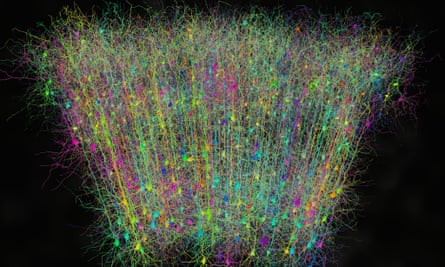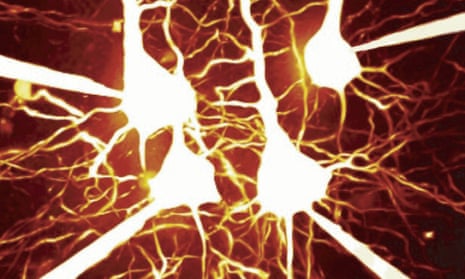World-leading neuroscientists have launched an ambitious project to answer one of the greatest mysteries of all time: how the brain decides what to do.
The international effort will draw on expertise from 21 labs in the US and Europe to uncover for the first time where, when, and how neurons in the brain take information from the outside world, make sense of it, and work out how to respond.
If the researchers can unravel what happens in detail, it would mark a dramatic leap forward in scientists’ understanding of a process that lies at the heart of life, and which ultimately has implications for intelligence and free will.
“Life is about making decisions,” said Alexandre Pouget, a neuroscientist involved in the project at the University of Geneva. “It’s one decision after another, on every time scale, from the most mundane thing to the most fundamental in your life. It is the essence of what the brain is about.”
Backed with an initial £10m ($14m) from the US-based Simons Foundation and the Wellcome Trust, the endeavour will bring neuroscientists together into a virtual research group called the International Brain Laboratory (IBL). Half of the IBL researchers will perform experiments and the other half will focus on theoretical models of how the brain makes up its mind.
The IBL was born largely out the realisation that many problems in modern neuroscience are too hard for a single lab to crack. But the founding scientists are also frustrated at how research is done today. While many neuroscientists work on the same problems, labs differ in the experiments and data analyses they run, often making it impossible to compare results across labs and build up a confident picture of what is really happening in the brain.
“It happens all the time that we read a paper that gets different results from us, and we won’t know if it’s for deep scientific reasons, or because there are small differences in the way the science is carried out,” said Anne Churchland, a neuroscientist involved in the project at Cold Spring Harbor Lab in New York. “At the moment, each lab has its own way of doing things.”
The IBL hopes to overcome these flaws. Scientists on the project will work on exactly the same problems in precisely the same way. Animal experiments, for example, will use one strain of mouse, and all will be trained, tested and scored in the same way. It is an obvious strategy, but not a common one in science: in any lab, there is a constant urge to tweak experiments to make them better. “Ultimately, the reason it’s worth addressing is in the proverb: ‘alone we go fast, together we go far’,” said Churchland.
The IBL’s results will be analysed with the same software and shared with other members immediately. The openness mirrors the way physicists work at Cern, the particle physics laboratory near Geneva that is home to the Large Hadron Collider. For now, the IBL team includes researchers from UCL, Princeton, Stanford, Columbia, Ecole Normale Paris, and the Champalimaud Centre in Lisbon, but over the 10 to 15-year project, more scientists are expected to join.

Decision-making is a field in itself, so IBL researchers will focus on simple, so-called perceptual decisions: those that involve responding to sights or sounds, for example. In one standard test, scientists will record how neurons fire in mice as they watch faint dots appear on a screen and spin a Lego wheel to indicate if the dots are on the left or the right. The mice make mistakes when the dots are faint, and it is these marginal calls that are most interesting to scientists.
Matteo Carandini, a neuroscientist involved in the IBL at University College London, compares the task to a cyclist approaching traffic lights in the rain. “If the light is green, you go, and if it’s red, you stop, but there’s often uncertainty. Very often you see only a bit of red, you’re not sure it’s even a traffic light, but you need to make a decision.”
Modern neuroscience textbooks have only a coarse description of how perceptual decisions are made. When light from a traffic light hits the eye, the retina converts it into electrical impulses that are sent to the visual cortex. The image is interpreted, and at some point a decision is made whether or not to fire neurons in the motor cortex and move in response. By recording from thousands of neurons throughout the mouse brain, IBL scientists hope to learn how and when neurons are pulled into the process.
The IBL has not set its sights on explaining complex decisions: which flat to rent, who to partner up with, who to vote for. But it is a start. When it comes to human responses to the outside world, neuroscience cannot explain much beyond the knee-jerk response and ejaculation.
“What people often don’t realise is that we have no clue how the brain works,” said Carandini.

Comments (…)
Sign in or create your Guardian account to join the discussion